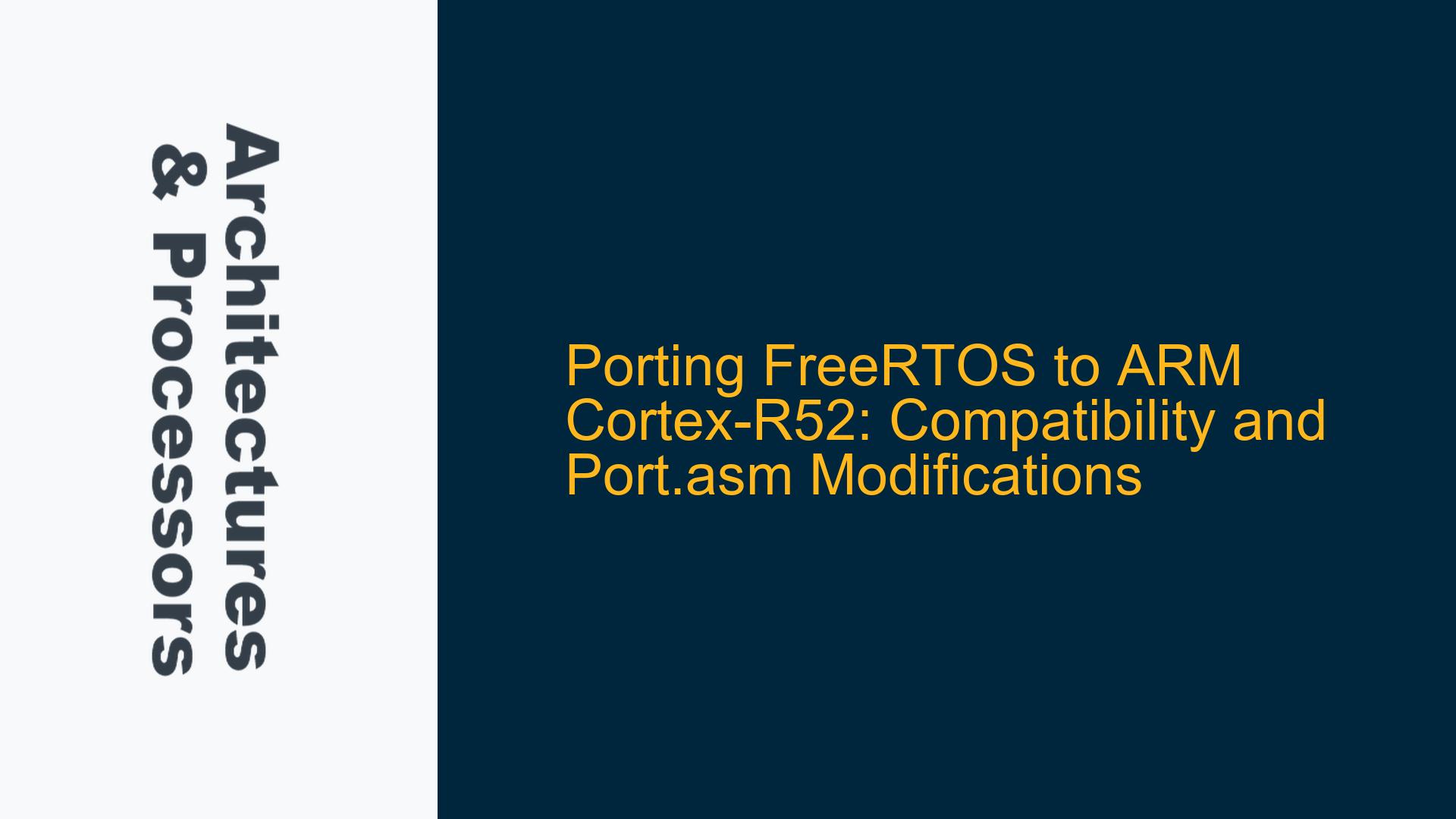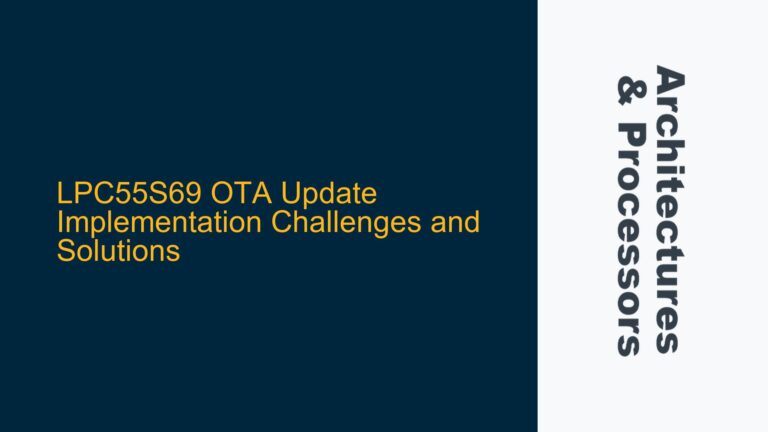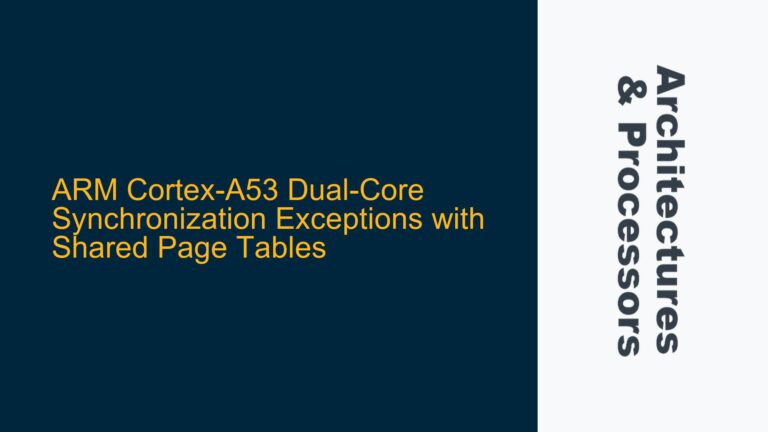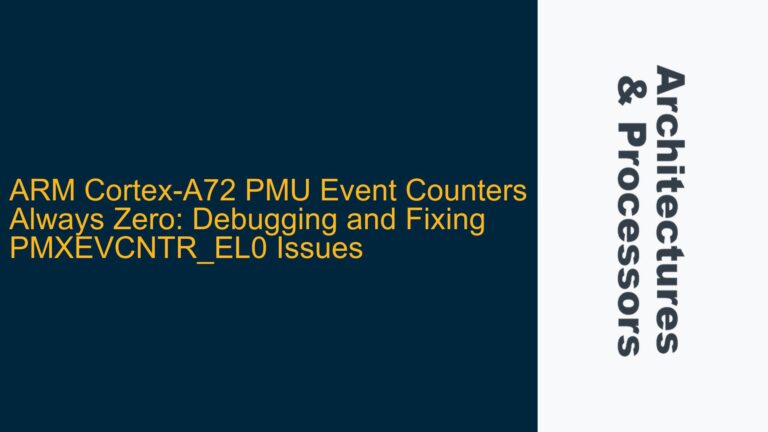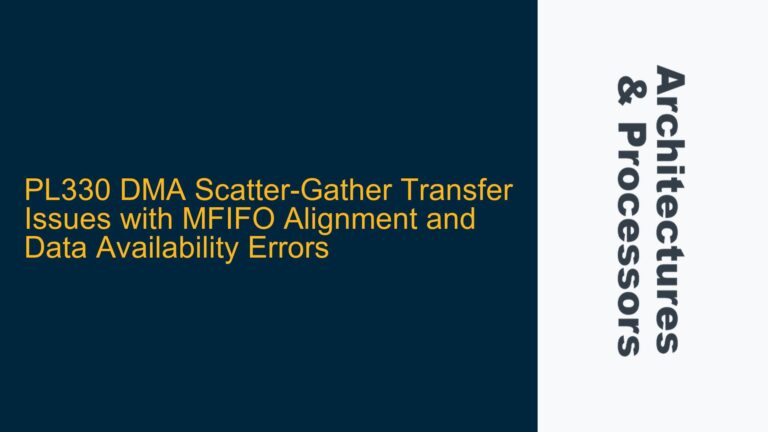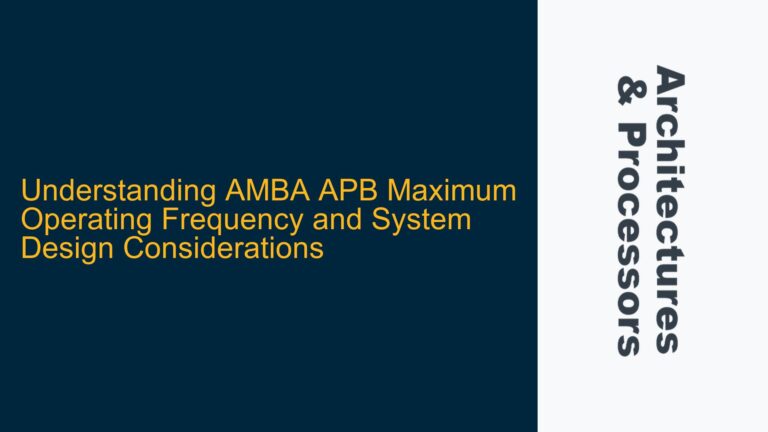ARM Cortex-R52 FreeRTOS Porting Challenges and Compatibility Issues
Porting FreeRTOS to the ARM Cortex-R52 processor involves addressing several architectural differences and ensuring compatibility with the specific features of the Cortex-R52. The Cortex-R52 is a high-performance processor designed for real-time applications, featuring a dual-core configuration, advanced memory protection, and support for virtualization. These features necessitate careful consideration when porting an operating system like FreeRTOS, which was originally designed for simpler ARM cores such as the Cortex-M series.
The primary challenge lies in the differences between the Cortex-R52 and the Cortex-R5, for which the FreeRTOS port files were initially developed. The Cortex-R52 introduces several new features, including a more complex memory management unit (MMU), enhanced interrupt handling, and support for virtualization. These features require modifications to the FreeRTOS port files, particularly the port.asm file, which contains the low-level assembly code responsible for context switching, interrupt handling, and other critical tasks.
One of the key differences between the Cortex-R52 and the Cortex-R5 is the handling of interrupts. The Cortex-R52 features a more advanced interrupt controller, which supports nested interrupts and priority-based preemption. This requires modifications to the interrupt handling code in the port.asm file to ensure that interrupts are correctly prioritized and that the context is properly saved and restored during interrupt servicing.
Another significant difference is the memory management unit (MMU) in the Cortex-R52, which supports virtual memory and memory protection. This requires modifications to the FreeRTOS memory management code to ensure that tasks are allocated memory in the correct virtual address space and that memory protection is correctly configured. Additionally, the Cortex-R52’s support for virtualization introduces new challenges in managing task contexts and ensuring that virtualized tasks are correctly isolated from each other.
Cortex-R52 Architectural Differences and FreeRTOS Port File Modifications
The Cortex-R52’s architectural differences from the Cortex-R5 necessitate several modifications to the FreeRTOS port files, particularly the port.asm file. These modifications are required to ensure that FreeRTOS can fully leverage the advanced features of the Cortex-R52 while maintaining compatibility with the existing FreeRTOS codebase.
One of the primary modifications required is to the context switching code in the port.asm file. The Cortex-R52’s dual-core configuration and support for virtualization require that the context switching code be updated to handle multiple cores and virtualized tasks. This involves modifying the code that saves and restores the task context to ensure that the correct context is saved and restored for each core and virtualized task.
Another important modification is to the interrupt handling code in the port.asm file. The Cortex-R52’s advanced interrupt controller requires that the interrupt handling code be updated to support nested interrupts and priority-based preemption. This involves modifying the code that saves and restores the interrupt context to ensure that interrupts are correctly prioritized and that the context is properly saved and restored during interrupt servicing.
The Cortex-R52’s memory management unit (MMU) also requires modifications to the FreeRTOS memory management code. The MMU supports virtual memory and memory protection, which requires that the FreeRTOS memory management code be updated to ensure that tasks are allocated memory in the correct virtual address space and that memory protection is correctly configured. This involves modifying the code that allocates and deallocates memory for tasks to ensure that the correct virtual address space is used and that memory protection is correctly configured.
Finally, the Cortex-R52’s support for virtualization introduces new challenges in managing task contexts and ensuring that virtualized tasks are correctly isolated from each other. This requires modifications to the FreeRTOS task management code to ensure that virtualized tasks are correctly isolated and that the correct context is saved and restored for each virtualized task.
Implementing Cortex-R52 Specific Modifications in FreeRTOS Port Files
To successfully port FreeRTOS to the ARM Cortex-R52, several specific modifications must be implemented in the FreeRTOS port files, particularly the port.asm file. These modifications are necessary to address the architectural differences between the Cortex-R52 and the Cortex-R5 and to ensure that FreeRTOS can fully leverage the advanced features of the Cortex-R52.
The first step in implementing these modifications is to update the context switching code in the port.asm file. The Cortex-R52’s dual-core configuration and support for virtualization require that the context switching code be updated to handle multiple cores and virtualized tasks. This involves modifying the code that saves and restores the task context to ensure that the correct context is saved and restored for each core and virtualized task. The updated context switching code must also ensure that the correct stack pointer is used for each core and virtualized task.
The next step is to update the interrupt handling code in the port.asm file. The Cortex-R52’s advanced interrupt controller requires that the interrupt handling code be updated to support nested interrupts and priority-based preemption. This involves modifying the code that saves and restores the interrupt context to ensure that interrupts are correctly prioritized and that the context is properly saved and restored during interrupt servicing. The updated interrupt handling code must also ensure that the correct interrupt vector table is used for each core and virtualized task.
The third step is to update the FreeRTOS memory management code to support the Cortex-R52’s memory management unit (MMU). The MMU supports virtual memory and memory protection, which requires that the FreeRTOS memory management code be updated to ensure that tasks are allocated memory in the correct virtual address space and that memory protection is correctly configured. This involves modifying the code that allocates and deallocates memory for tasks to ensure that the correct virtual address space is used and that memory protection is correctly configured. The updated memory management code must also ensure that the correct page tables are used for each core and virtualized task.
Finally, the FreeRTOS task management code must be updated to support the Cortex-R52’s virtualization features. This involves modifying the code that creates and manages tasks to ensure that virtualized tasks are correctly isolated and that the correct context is saved and restored for each virtualized task. The updated task management code must also ensure that the correct task control block (TCB) is used for each core and virtualized task.
In conclusion, porting FreeRTOS to the ARM Cortex-R52 requires several specific modifications to the FreeRTOS port files, particularly the port.asm file. These modifications are necessary to address the architectural differences between the Cortex-R52 and the Cortex-R5 and to ensure that FreeRTOS can fully leverage the advanced features of the Cortex-R52. By carefully implementing these modifications, it is possible to successfully port FreeRTOS to the ARM Cortex-R52 and take advantage of its high-performance and real-time capabilities.
